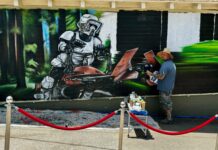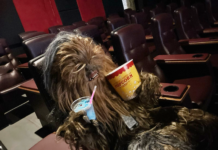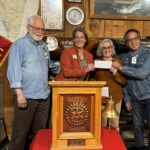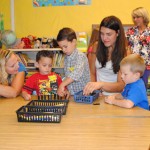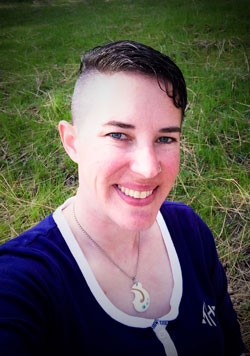
Photo by Jenny Kirchner
Photographer Jenny Kirchner sees the world through two different lenses — one that frames and captures a moment of beauty and another that frames and captures a moment that tells a story, sometimes a difficult and emotionally wrenching story.
But whether it is in art photography or photojournalism, Kirchner stressed that one has to be sensitive to how quickly time passes. It’s important to be sensitized to the subtleties of the moment — to be fully present and to notice in order to get the shot. “It’s all light,” she said. The light changes and the shot does not wait.
She was 13, it was summer, and she and her father were on vacation in Colorado. “Let’s buy you a camera,” her father said. “It was a Canon Rebel X,” recalled Kirchner. “I started taking photos immediately. That’s how we bonded — taking photos.”
At 15, Kirchner accepted a scholarship from the North American Nature Photography Association. The scholarship funded a weeklong residential seminar taught by top professional nature photographers. At the end of the seminar photo shoot, each of the 10 students chose their best shots to show before an audience of 1,000 editors, publishers and professional photographers. “I was the youngest of the 10 chosen from nationwide applicants and the only one from the West Coast,” said Kirchner. “It was probably one of the best experiences in my life.” At 18, Kirchner received her first of many awards, an honorable mention in the San Diego County Fair for wildlife photography.
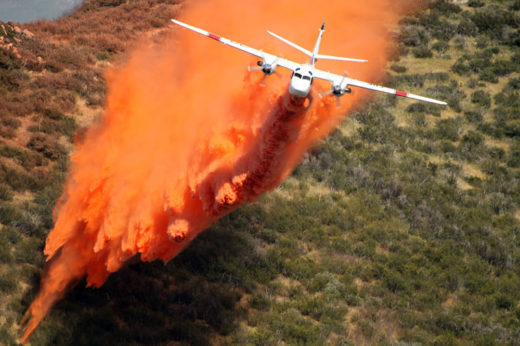
Growing up in Idyllwild and often being outdoors shaped how Kirchner looked at the world around her. “I loved animals, being in the woods, playing in the creek, noticing what was around me,” said Kirchner.
“I began to see things in patterns — how light cast patterns on objects and how patterns existed in nature and in structures.” Patterns caught her attention — the lines of benches on a porch and how light cast patterns through the porch railings onto the floor — jagged lightning patterns against a night sky contrasting with the softer outlines of a hill — sunlight backlighting a leaf and how light sculpted parts of the leaf.
While being interviewed at the Town Crier, Kirchner began noticing through the window sunlight on plants along a porch railing. Because

Photo by Jenny Kirchner
we had been talking about patterns, and how they caught her attention, she illustrated by going out to take a photo of what she was seeing. The photo, taken with her iPhone, showed a stream of light highlighting the top of a curved branch. There was also a light pattern of a perfect cross in the bottom right of the photo.
Kirchner’s demonstration was a revealing moment showing the importance of noticing the light, how it plays on and through objects, and how critical it is to know how transitory specific light patterns can be — that as the light changes, so does the moment and the shot.
It is the same with photojournalism, said Kirchner. She stressed the need to be fully and unobtrusively present to capture a story unfolding without distracting those in the photo, because if the subjects become aware of the photographer, then the story changes.
“People ask me how I deal with taking photos of difficult situations,” Kirchner recalled. “There is a distance with a camera — the camera creates a barrier between me and what is happening. It’s as if you’re watching a movie. Of course, it affects me emotionally, but usually after, not during the moment of taking the photo. What is going on affects me emotionally and

Photo by Jenny Kirchner
mentally but not enough, at the time, to stop me from taking the photos. I try to take in the moment and the emotions of the moment, but from a distance, through the lens, being as discreet and as sensitive as I can. I tend to stay as far out of their face as I can.”
In her early 20s, Kirchner took courses and became certified in crimes and investigations with the thought of pursuing a career in crime-scene investigation photography. “It’s a darker side of life, that is real, and that people want to see. And that rush of running out to an event fed that little part of me that was interested in CSI.”
Kirchner described how, probably more than in most careers, one is always noticing, being present for the potential of a shot. “I’ll stop whatever I’m doing if I see a shot,” she said.
“I never wanted photography to be my career because I love it so much. I did not want it to become work but every time I would try to step away, I would get pulled back in. I would see something.”
Kirchner described how a family friend, that she called her aunt, taught her a life lesson she has always followed. Sunderland Everstill, who headed Living Free after founder Emily Jo Beard died, was a constant presence in Kirchner’s young life. “She always told me to follow my heart and that doing so would lead me in the right direction,” said Kirchner. “That’s why I continue to do what I do. It’s my heart — something that draws me to it that is really beyond what I can comprehend. It’s not a choice.”
Kirchner also talked about how she is often surprised by what she sees and how that, by itself, is another reason to keep
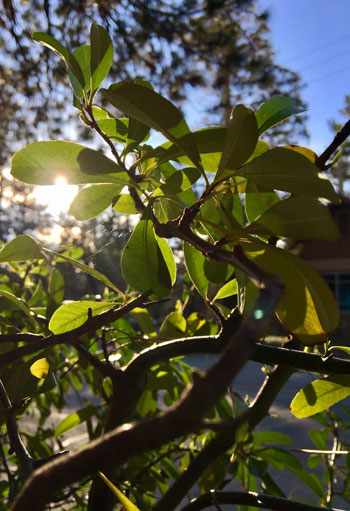
Photo by Jenny Kirchner
looking, to keep taking photos. “I would be seeing something different and interesting and then I would walk out there and see something else.
“Photography is my passion. It’s what I’m here to do.”
Kirchner has won regional, statewide and national awards as a photojournalist. Some of her work can be viewed on her website at www.jennykphoto.com.

